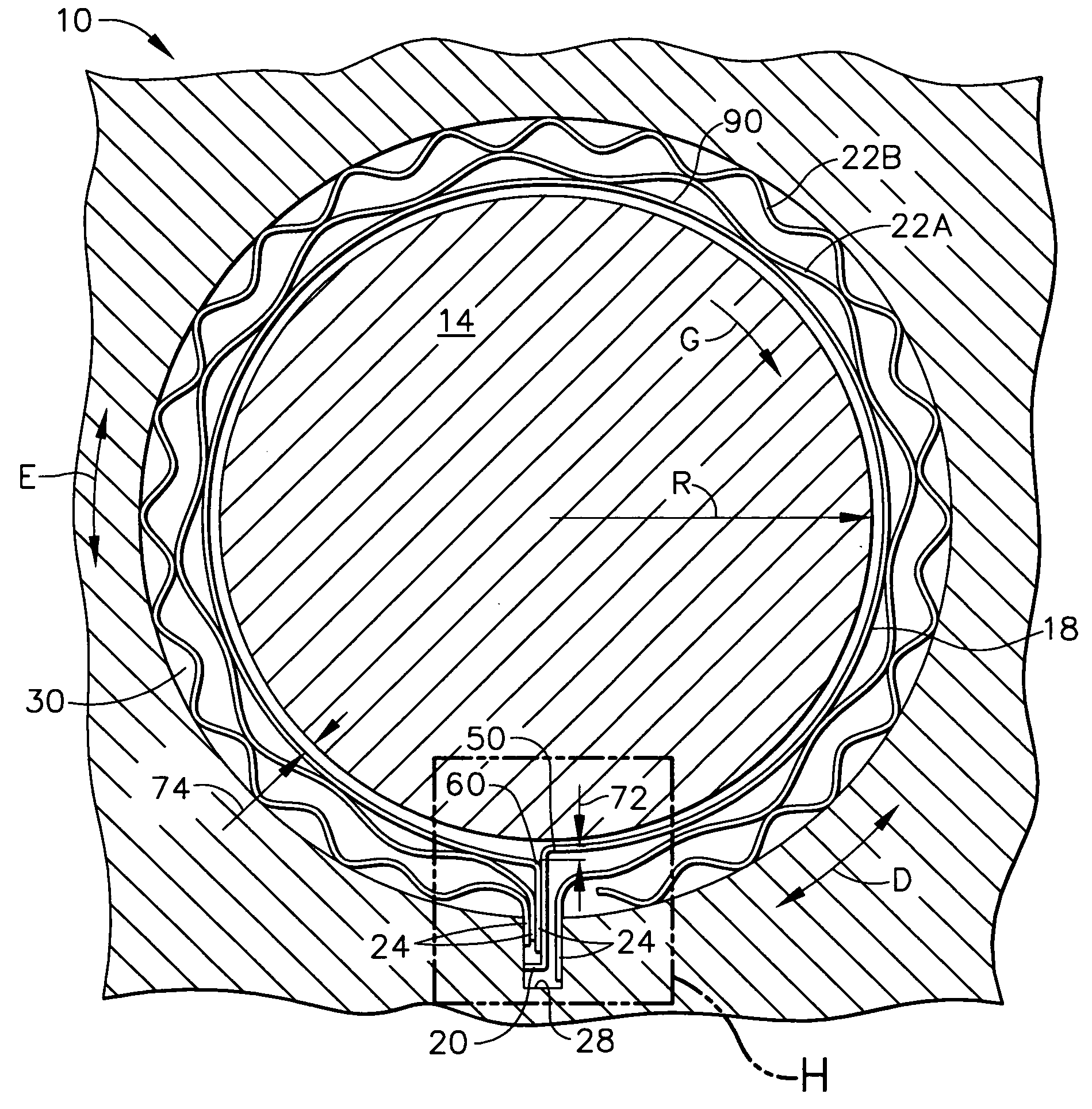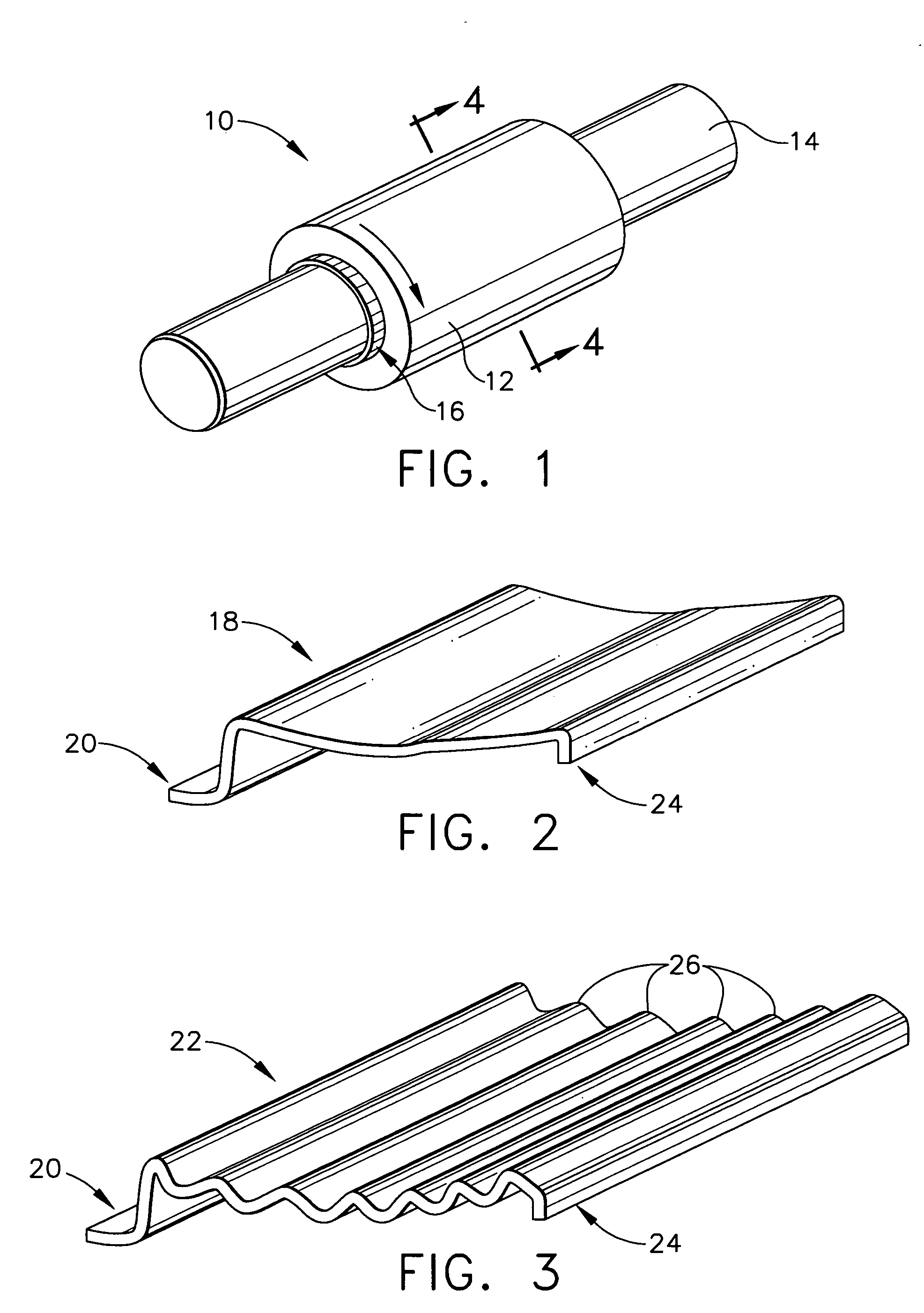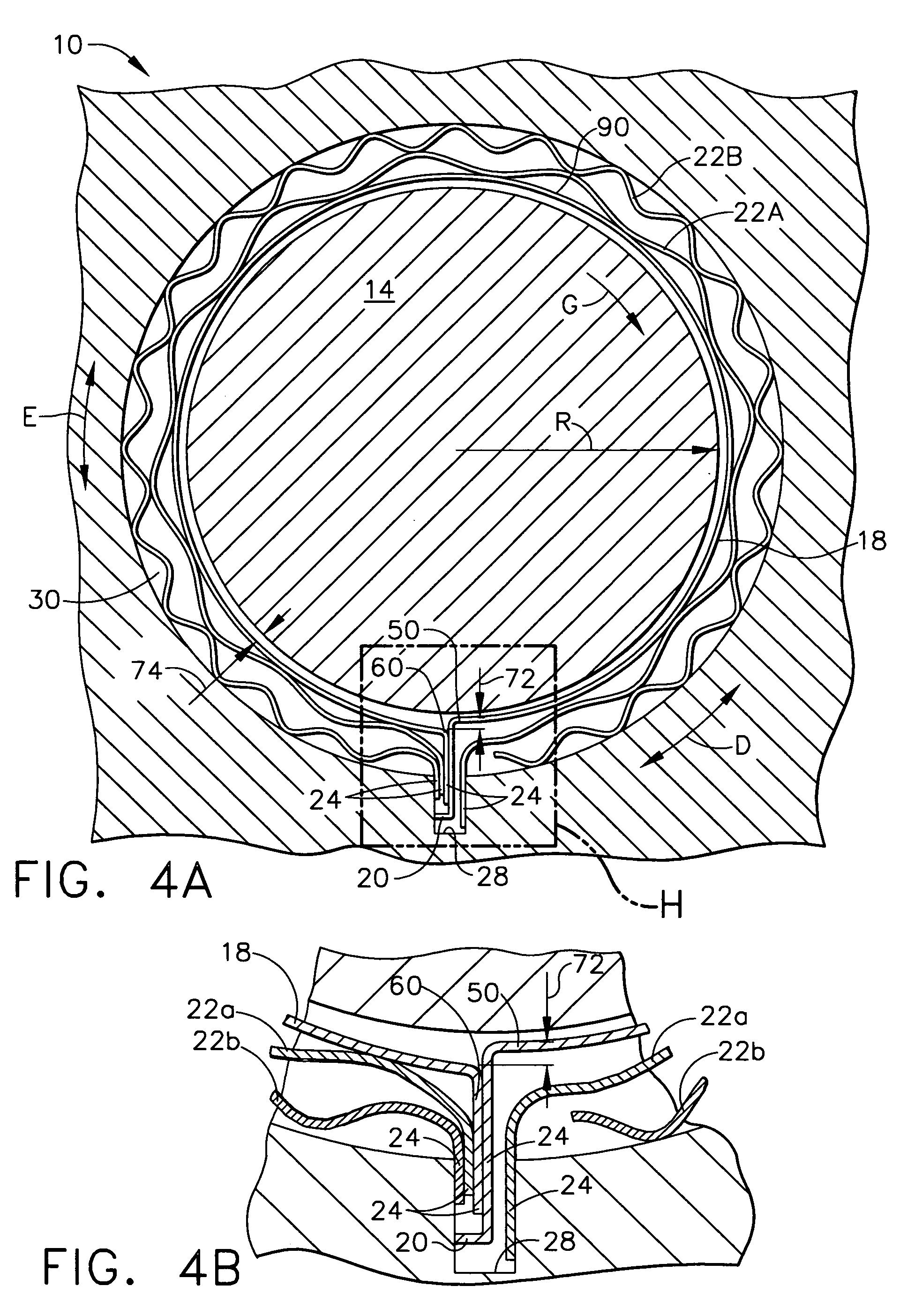Hydrodynamic journal foil bearing system
- Summary
- Abstract
- Description
- Claims
- Application Information
AI Technical Summary
Benefits of technology
Problems solved by technology
Method used
Image
Examples
Embodiment Construction
[0041] The following detailed description is of the best currently contemplated modes of carrying out the invention. The description is not to be taken in a limiting sense, but is made merely for the purpose of illustrating the general principles of the invention, since the scope of the invention is best defined by the appended claims.
[0042] The invention is useful for high speed rotating machinery. The present invention relates to pneumatic journal bearings supporting a rotating shaft of a variety of high speed rotating systems, such as auxiliary power units for aircraft or air conditioning machines and, more particularly, to a gas foil journal bearing having a foil with both a top foil and plurality of undersprings which have a high supporting capacity of the shaft when highly loaded and a high damping capacity. Additionally, the top foil has a leading edge and a trailing edge that push against each other to maintain the top foil shape when starting or stopping high speed rotatin...
PUM
 Login to View More
Login to View More Abstract
Description
Claims
Application Information
 Login to View More
Login to View More - R&D
- Intellectual Property
- Life Sciences
- Materials
- Tech Scout
- Unparalleled Data Quality
- Higher Quality Content
- 60% Fewer Hallucinations
Browse by: Latest US Patents, China's latest patents, Technical Efficacy Thesaurus, Application Domain, Technology Topic, Popular Technical Reports.
© 2025 PatSnap. All rights reserved.Legal|Privacy policy|Modern Slavery Act Transparency Statement|Sitemap|About US| Contact US: help@patsnap.com



